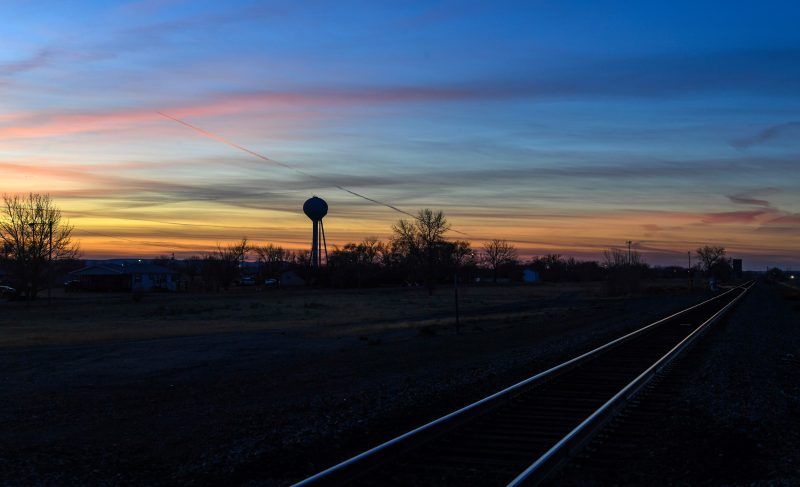As drug abuse ravages America’s Native communities, the Indian Health Service (IHS) faces its own calamities — facilities in such bad shape that patient health is threatened.
Two recent Senate Committee on Indian Affairs hearings examined “the fentanyl crisis that is devastating Native communities across the country,” as the chairman, Sen. Brian Schatz (D-Hawaii), said at last week’s session.
Citing National Center for Health Statistics data during the November meeting, he lamented “an alarming 33 percent rise in drug overdose deaths,” including by fentanyl, from 2020 to 2021 among American Indians and Alaska Natives. That’s the second largest increase among ethnic groups in America, with Native Hawaiians and Pacific Islanders leading with a 47 percent rise in deaths.
“These overdose deaths rates are nothing short of staggering,” Schatz said in November.
The need for more and better law enforcement, along with health services and culturally based care, was repeated by Native American witnesses and senators.
“Drug traffickers … are specifically targeting our Native communities,” Sen. Lisa Murkowski (R-Alaska) said last week. Native American places with just 500 people are pursued by “organized multistate drug traffickers,” she added, because the Native communities “struggle with a lack of law enforcement.”
Meanwhile, most IHS facilities serving Native American and Alaska Native populations with drug abuse and other ailments are in poor (32 percent) or only fair (29 percent) condition, with equipment so old or broken that it threatens “exacerbating patients’ medical conditions” and risks the “ability to deliver high quality health care,” according to a Government Accountability Office report from November. The IHS goal of maintaining 90 percent of its facilities in good condition seems fanciful without the sustained improvements that have been lacking. The IHS provides health care for 2.8 million Native Americans and Alaska Natives.
These are not new problems. The GAO cited reports of the IHS’s “aging infrastructure and equipment” from 2016. Last year, the GAO found “physical infrastructure challenges … complicated the IHS’s ability to provide routine health care and treat patients with COVID-19.” Pipes froze, burst and flooded the IHS hospital in Pine Ridge, S.D., in the winter of 2021, closing the inpatient unit for two weeks and forcing the relocation of 17 patients. From 2018 to 2022, the IHS’s estimates of its deferred maintenance and repairs backlog more than doubled to $737 million.
The IHS did not respond to questions from The Washington Post, but it agreed with the GAO’s recommendations, including to better monitor medical equipment and implement a plan to correct problems. Some officials told the GAO the funds available for medical equipment “are insufficient for their needs.” The problems probably would not have gotten so bad, however, had the IHS management paid more attention to its facilities.
“The state of medical equipment at IHS federally operated facilities cannot be determined because IHS does not have complete or reliable data,” GAO auditors said. “… IHS leadership was not aware of these problems until GAO’s review and does not know the extent to which similar problems may exist” across its facilities. That indicates the IHS’s “current monitoring activities are not effective.”
Rep. Frank Pallone Jr. (N.J.), the top Democrat on the House Energy and Commerce Committee, told The Post: “This report is alarming and underscores why Congress must increase funding for the Indian Health Service. We requested this report after hearing from tribal representatives and provider groups that old and inadequate facilities and medical equipment challenge IHS’s ability to provide quality care to tribal members, and this report confirms those challenges.”
At the November hearing, Tony Hillaire, chairman of the Lummi Indian Business Council in Washington state, rhetorically questioned the senators about the personal impact of fentanyl deaths. “Just how many funerals have you been to in the last year? How many have you been to in the last month, in the last week?” he asked. “And for us, it’s pretty much every day, and that’s not just for fentanyl overdose, which has been completely devastating, but also all of the health disparities that we see at Lummi Nation that we are up against.”
Bryce Kirk, a councilman for the Fort Peck Assiniboine and Sioux tribes on the Fort Peck Indian Reservation in Montana, spoke about his brothers lost to fentanyl. “We in Fort Peck have lost a generation of kids right now, and we got grandkids taking care of great-grandma — we got grandparents taking care of great-grandchildren, because the grandchildren that they were taking care of, are now lost in the addictions that we face today,” said the self-described recovered addict, as he called for more policing and behavioral health services.
Claradina Soto, a University of Southern California professor of Navajo and Jemez Pueblo descent, pressed the need to expand “Native-specific and culturally centered services” that include “healing ceremonies such as prayers, smudging, sweat lodges and meeting with traditional healers.”
“Studies have found that many Native community members do strongly favor traditional healing over strict medication use,” she added at the hearing. “… Healing begins with culture and with practices that are grounded in our traditional way of life.”
Echoing that, Schatz said by email that “the federal government must continue supporting these Native-led solutions and do more to ensure IHS facilities have the resources and equipment needed to promote the health and well-being of Native communities across the country.”
Kirk welcomed that assistance, but without Washington telling Indian Country what to do.
“We as Indian people are resilient and will continue to come out of this as we always have,” Kirk said. “But we need additional support from all parts of the federal government, and we need federal agencies to be true partners with us in this effort. We don’t need bureaucrats in D.C. telling us how to solve the problem.”
